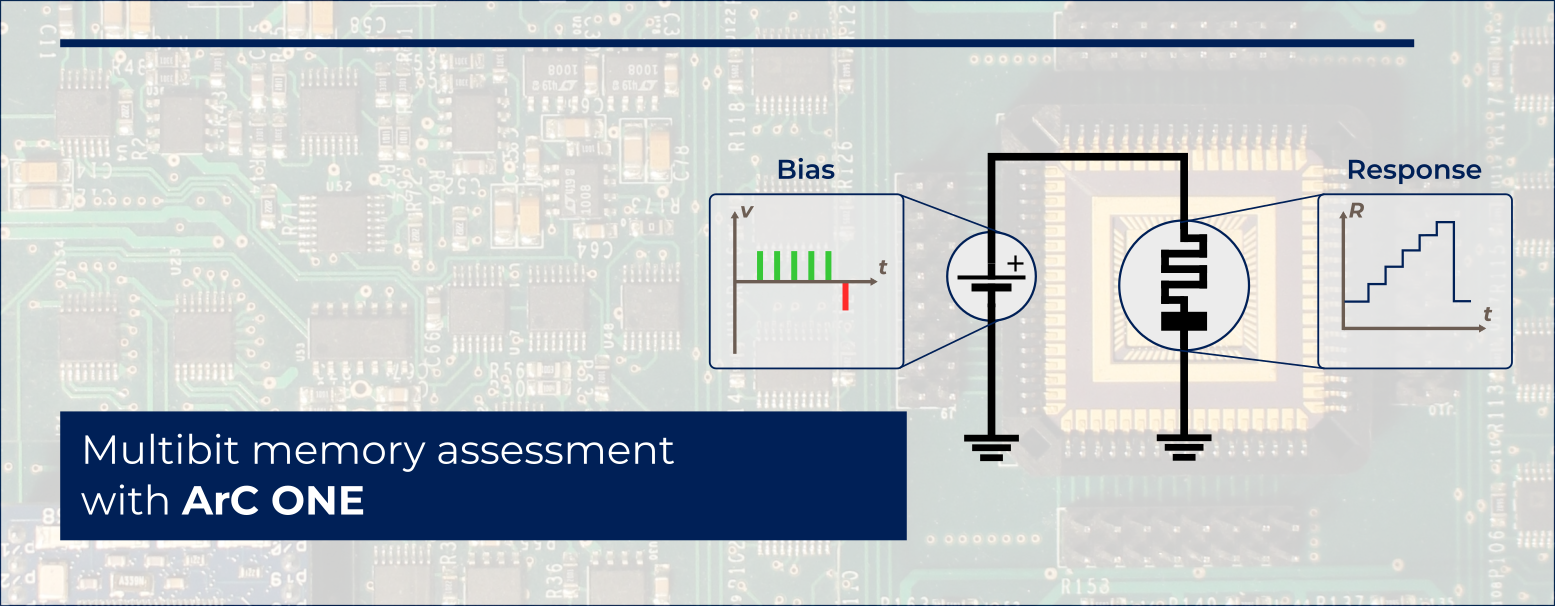Multibit memory assessment with ArC ONE

A recent publication by University of Southampton researchers has unveiled the multibit capability of metal-oxide based resistive memory delivering a record 6.5 bits of storage. Although multistate capability has been demonstrated before implementing and testing a memory cell with more than 3 bits of storage is a complex endeavour. This development paves the way for neuromorphic as well as non-volatile memory applications.
According to the experiment a multitude of different metal-oxide combinations have been investigated in respect to their multi-bit capability. From the results it is evident that the use of bilayer active layers has a clear benefit on the overall stability and reliability of the device as well as their multi-bit capability. Among the materials tested the AlxOy/TiO2 combination proved to be the most performant in both the dynamic range as well as the overall number of attainable states as can be seen in the cumulative probability function (figure 1).

ArC ONE played a pivotal role in the multi-bit evaluation of the devices under test. Using a custom module for ArC ONE, Multistate Seeker, the researchers managed to automate the complete characterisation routine for the multiple state assessment. The implemented algorithm is comprised of three distinct phases. The first one is used to determine the effects of the applied bias polarity on the device, i.e. whether a given polarity can induce an increase or decrease in the resistance of the device. This is essentially similar to a previously presented algorithm which is also available as a standalone module for ArC ONE. After this information has been obtained the system will drive the resistance of the device to the lowest (or highest) possible value (phase 2). As long as the baseline has been established the state assessment happens in phase 3. Using the polarity information gathered from phase 1, ArC ONE sequentially pulses the device until its resistance has exceeded a user-defined threshold. Additionally, since this approach forgoes the use of compliance current limiting it is ensured that only the absolutely necessary amount of energy is expended to program the device. The estimated programming energy ranges from pJ for the lowest states up to a few nJ for the upper states.
Using the capabilities and the modular nature of ArC ONE software an essentially complex characterisation protocol can be applied to a whole crossbar array of devices with only a few clicks.
Read the paper: S. Stathopoulos, A. Khiat, M. Trapatseli et al. “Multibit memory operation of metal-oxide bi-layer memristors” Scientific Reports, 7, 17532 (2017)
